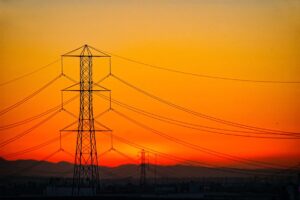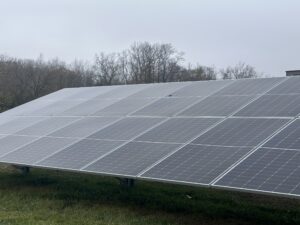Interconnection ‘report card’ shows an ongoing struggle to connect new generation


Transmission lines near Los Angeles, California (Courtesy: Robert Thiemann/Unsplash)
A new, “first-of-its-kind” scorecard from national business association Advanced Energy United evaluates and grades the seven U.S. regional transmission organizations on their generator interconnection processes. The scorecard, authored by Grid Strategies and The Brattle Group, shows that interconnection is not going smoothly in any region of the country, with some regions facing serious deficiencies.
Generator interconnection is the multi-year, multi-step process of connecting new electricity generation sources to the grid and is critical to maintaining grid reliability. Recognizing that reforms to interconnection processes are underway, this report card presents a baseline against which the success of these reforms can be measured, and underscores the importance of effective implementation of a recent interconnection order issued by the Federal Energy Regulatory Commission (FERC). The report card also identifies regions that have made the most progress to date, which allows for the identification of best practices and reform needs beyond those already mandated by FERC.
“There are over a million megawatts of renewable power and storage stuck waiting in line to connect to the U.S. transmission grid because the processes to interconnect them are flawed,” said Caitlin Marquis, Managing Director at Advanced Energy United. “This scorecard confirms what we know about the interconnection process, that grid managers have moved too slowly to adapt to changing market conditions, allowing the process of connecting new electricity to the transmission grid to become dysfunctional. Without urgent improvement, the U.S. grid may struggle to keep up with growing energy demands, threatening our ability to keep the lights on and reach our climate goals. Strong implementation of FERC’s recent reforms will be an important first step toward improving the interconnection process, and it’s also clear that additional reforms will be needed.”

No region scored an “A” but two regions stand out as doing a better job than the rest: both the California Independent System Operator (CAISO) and the Electric Reliability Council of Texas (ERCOT) received a “B” score. CAISO is seen as having a good process that has failed to keep up with the recent increased volume of interconnection requests, while ERCOT has an efficient interconnection process, but projects face a high risk of curtailment once connected.
The other regions received grades of “C-” or lower, which Advanced Energy United says reflects a need for interconnection reforms. The deficiencies identified by the report ranged from process shortcomings to implementation challenges to staffing shortages.
“It’s promising that grid operators are already working on new approaches because the old way of getting electricity sources plugged into the transmission system isn’t working,” said Rob Gramlich, President of Grid Strategies, which co-produced the report along with The Brattle Group. “This report establishes a baseline evaluation, which will be useful in judging how the regional grids rework their interconnection rules as they are all doing, due in part to FERC Order No. 2023.”
The scorecard evaluation was based on interviews with interconnection customers and data furnished from Lawrence Berkeley National Laboratory (LBNL) and individual regional grid operators. This analysis assigns a grade to each of the regions for six categories related to the generator interconnection process and results. The scores reflect the recent conditions of interconnection processes, and don’t reflect the potential impacts of ongoing interconnection reforms, such as proposed FERC Order No. 2023 compliance measures.

The full report is available here.




